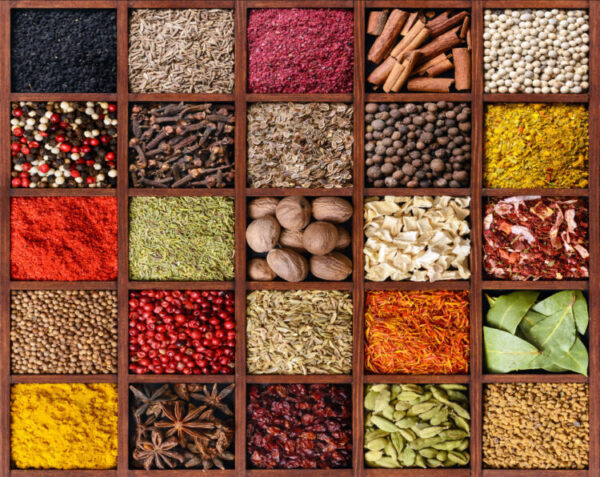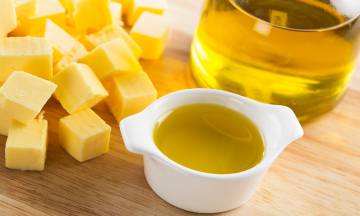
In a few short minutes, you can elevate the flavor and intensity of your whole spices before grinding them fresh and adding them to your dish.
Yes, ground spices are convenient, but the flavor of said spice quickly diminishes over time, leaving you with a very mild flavor that doesn’t really do anything for your dish. If anything, it will have you wondering why your dish just doesn’t taste the same or is lacking in flavor – even though you made this dish the same as every time previous.
Over time Oxidization occurs (think of when you slice an apple and before you get to eat it it’s turning brown – that’s Oxidization) and the once flavorful spice you loved has wilted into nothingness.
If you’re like most people and have jars, tins, bags, or containers of ground spices that have been in your cupboard since, well forever, do yourself a favor and toss them. One, there is more than likely zero flavor left in that spice, and two, it’s just taking up room in your spice cupboard.
Most of us tend to have a small selection of herbs and spices that we use pretty frequently, including pepper. For the spices that you tend to graduate to on the regular, look for them as whole spices. Not only will you get more bang for your buck in the long run, but the flavor that comes from these whole, freshly ground spices honestly does not compare to the preground stuff. It really is an apples-to-oranges difference. For the spices and herbs you use on rare occasions, either look for bulk buying options and only purchase a small amount at a time, or look for an alternative spice in your collection that has similar flavor profiles. For example, Star Anise has a beautiful black licorice flavor. If you can’t find Star Anise, swap it out for Fennel. If you can’t find Fennel, look for fresh Tarragon. All 3 have a similar flavor profile that can be used interchangeably in a dish.
To take your whole spices to a whole (pun intended) new level of flavor and added excitement to your dish, toast them in a pan over medium heat for a few minutes. Follow the instructions below to toast your whole spices.
Instructions:

- Make sure the pan you are using is cold and clean. Do not use any oil or butter. We are not looking to fry the spices and herbs. You can use any pan you have handy, however, we find a heavy frying pan is just easier as it eliminates hot and cold spots and disperses the heat evenly.
- Place the pan with spices on the stove and heat it up to medium. You’ll start to smell the spices as they heat up. The fragrance that will fill your home on its own will have you doing this over and over. Make sure as they heat up that you gently shake the pan to move them around. Some spices will pop, some will crackle, and that’s totally ok!
- Keep a watchful eye on the color of the spices. Once they start to turn brown, quickly remove the pan from the stove and transfer the spices to a bowl to cool down. The residual heat will keep them cooking and toasting for a few extra minutes. If you left them in the pan until they were very toasted, the carryover heat will cause them to overcook and turn the spices bitter. This shouldn’t take you any more than 3-4 minutes.
- To grind them, transfer them to either a food processor, blender, or a mortar and pestle. Grind until your desired consistency.
- Store any leftover spices in an air-tight container and if possible, write the date you ground them up on the container or a piece of tape.
All spices will benefit from toasting them before grinding, including peppercorns!


 .
. . If you’re foodies like us, we think this will be a regular thing for you too!
. If you’re foodies like us, we think this will be a regular thing for you too! . The Maillard reaction helps create the most amazing crust on the meat once cooked. It’s incredible.
. The Maillard reaction helps create the most amazing crust on the meat once cooked. It’s incredible.


